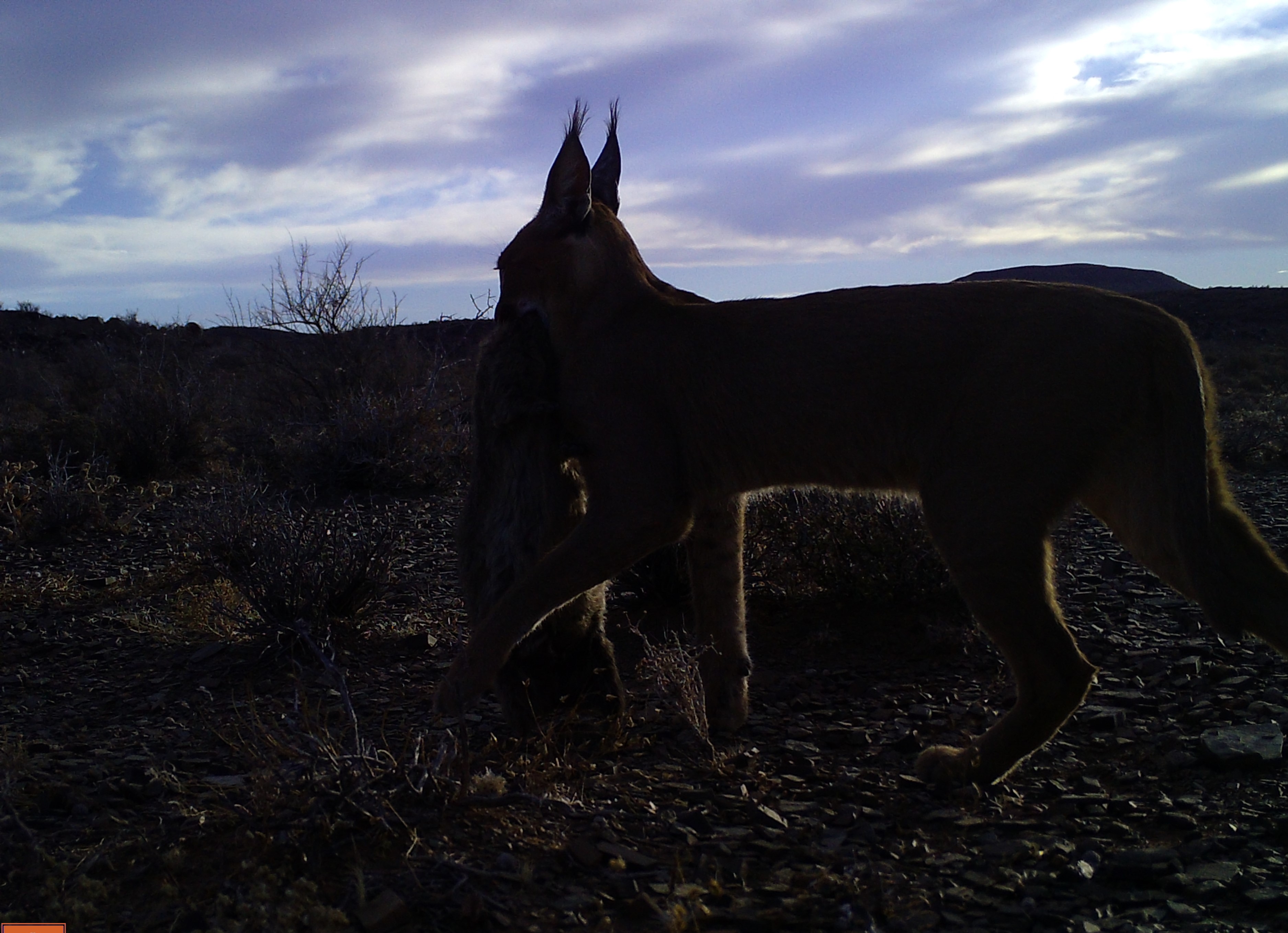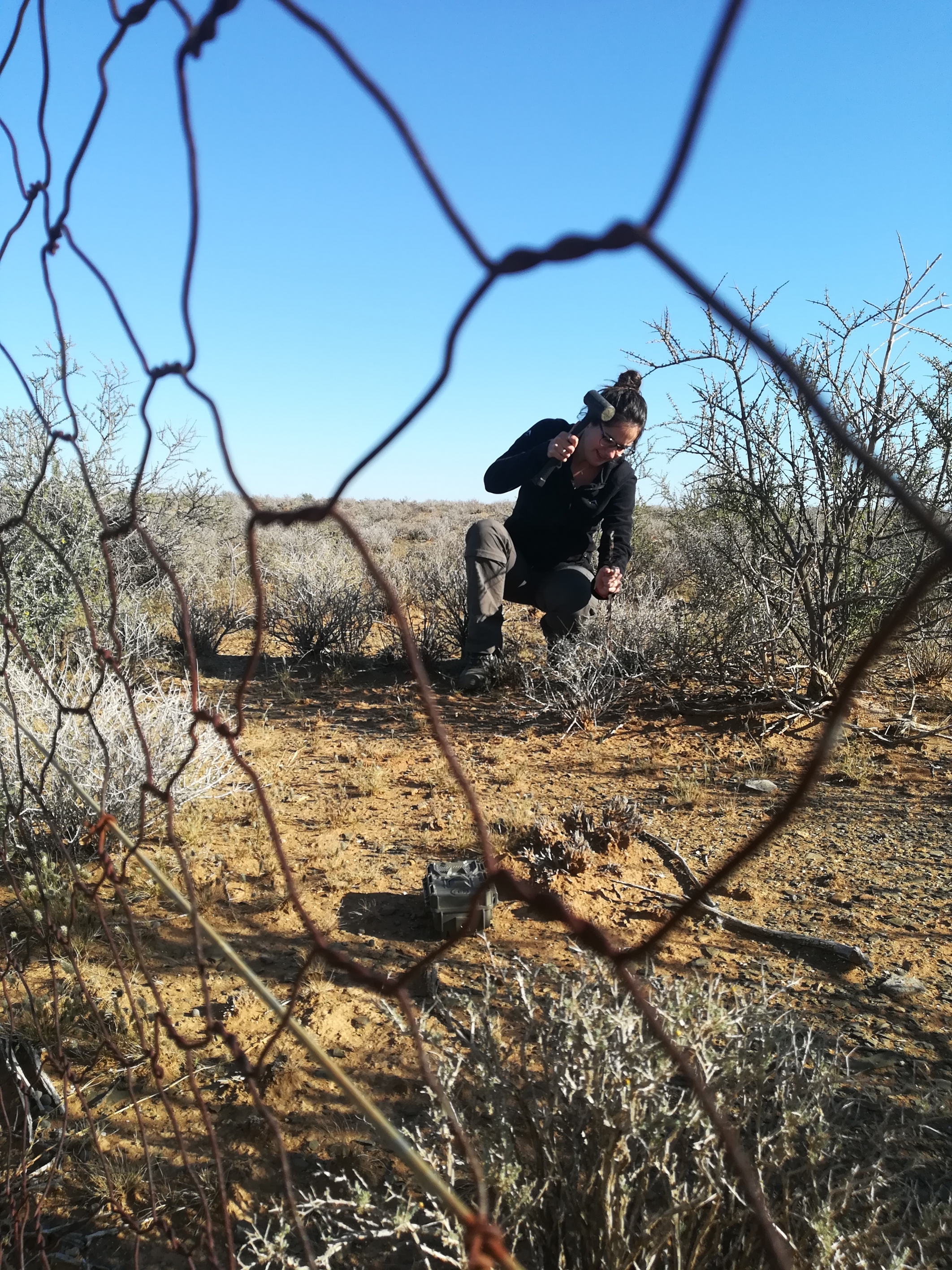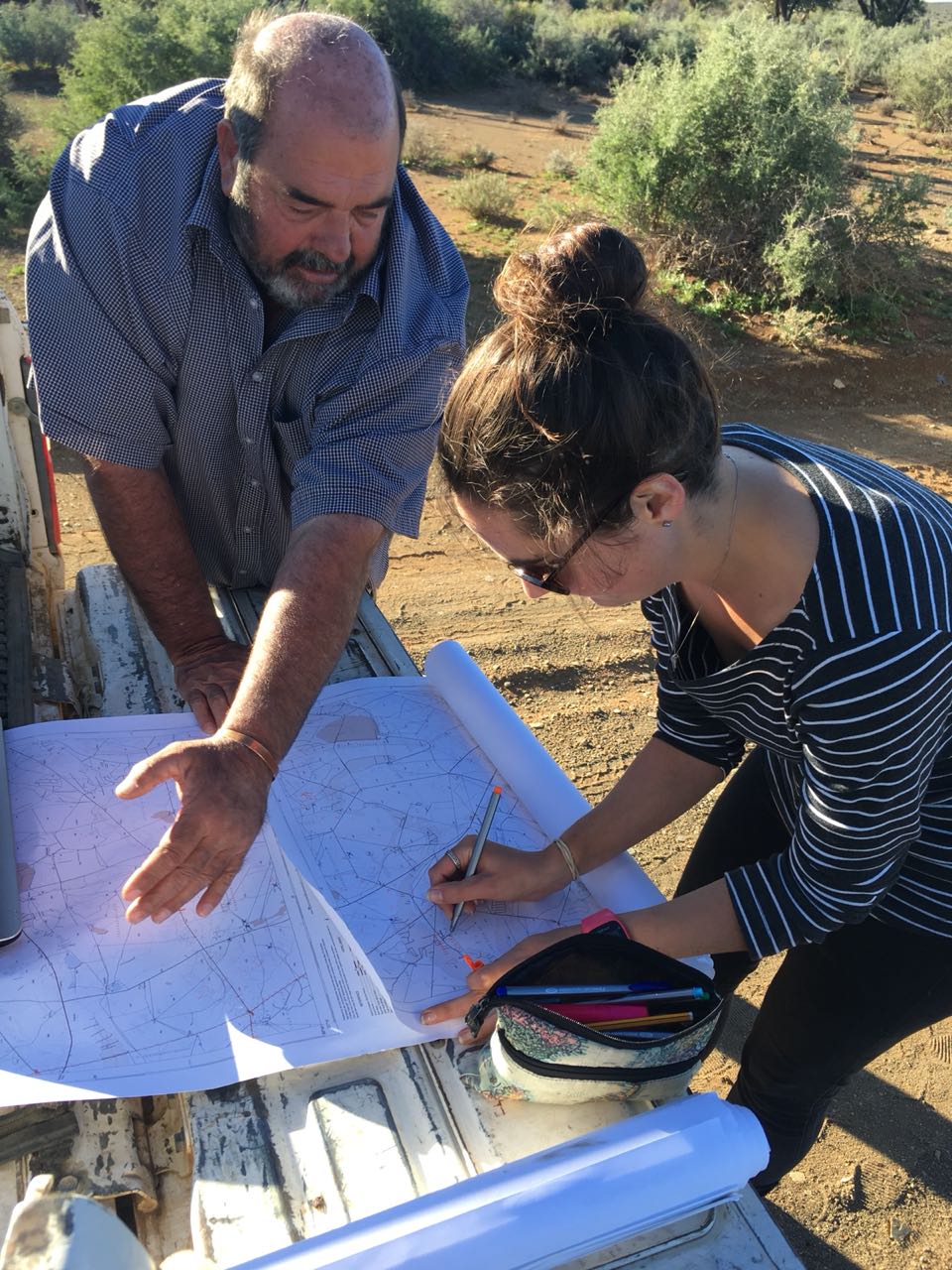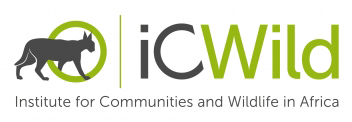|
Jump to: iCWild's work · Key insights · Project team · Collaborators and funders · Outputs |
With the establishment of the Square Kilometre Array (SKA) in the Karoo, in the Northern Cape province of South Africa, a unique opportunity arose to study the impacts of landscape-scale land use change on mammal populations. The aim of this project is to look at how sheep removal and the establishment of a protected area within a predominantly small livestock farming area will impact local mammal populations (e.g., rats, mice, foxes, jackals, etc.) in the SKA region. To achieve this we need baseline data (before sheep and farmers are moved off the SKA core land) to see what animals are there and how many. This will be compared to data collected 6 and 12 months after sheep are removed, establishing how animals react to the change in land use. Major concerns over the potential conflict between farmers and predators has suggested that particular attention should be paid to the response of jackal and caracal to the removal of sheep and how movement between core and edge farms may change.
iCWild's work

We work on nine established sheep farms in the SKA region. The farms are divided into three groups; core (within SKA protected area), edge (outer border of SKA protected area), and control farms (more than 50 kms for SKA protected area). On all nine farms we record the same data with four different surveys – vegetation, small mammal, camera trap surveys and scat transects. This is to make sure we get information on as many mammal species as possible (small, medium and large). An additional fence line survey (looking at dimensions and numbers of holes in fences, as well as setting up cameras) will take place along the SKA boundary fence between the three core and edge farms.
We hope the information collected for this project will guide management decisions for the SKA core area, as well as for the farms around the core that could be affected. Understanding how movement of animals changes (through fence surveys) may help improve management of boundary fences and challenges over predator conflict on neighbouring farms.
Key insights

Species richness and abundance is similar across all farm types.
Baseline data shows that species richness and abundance is similar across all farm types. This was expected as during baseline surveys all farms still had sheep on the land. Therefore there should be no differences across farm type. This will provide an appropriate dataset for comparison when looking at the impact of sheep removal, 6 and 12 months after sheep are removed from core farms.
Regular maintenance of fences can reduce predator presence on farms.
Our fence surveys show that regular maintenance of fences can reduce the number, size and use of holes within the fence. As predators frequently use fence holes to gain access to farm, a farm with a regularly-maintained fence, will have fewer predators moving through it.
Removing sheep from farms may have little impact on small mammal populations.
A smaller small mammal survey completed in 2018 on two farms within the core, which have had no sheep for seven years, saw no change in small mammal richness and abundance compared to baseline data (where sheep were present). When we compare this result to data collected during our ‘after’ surveys we will be able to determine whether the pattern still holds.

Interesting changes to predator abundance post-sheep removal
Core farms where sheep have been removed have a higher predator (jackal and caracal) abundance than farms that still have sheep (baseline). However, only jackal numbers increase on edge and control farms. It is difficult at this stage to identify why predators have responded in this way, as sheep removal may not be the only cause.
Collaboration between researchers and stakeholders is important for all parties.
We encourage collaboration between researchers and farm owners, and have found farmers to be very interested in the emerging data. They are keen to understand which animals are being found on their farms, and how animal populations change over time. In turn, farmers provide valuable information on management techniques and local weather patterns that can help to explain various responses by animals.
Project team
|
Michelle Blanckenberg (iCWild), PhD candidate and Project contact Prof Justin O’Riain (iCWild), Supervisor Prof Gary Bronner (Department of Biological Sciences, UCT), Co-supervisor Jonathan Plaistowe (Department of Biological Sciences, UCT), Honours graduate (2018) |
Collaborators and funders
Related outputs
Click here to view iCWild's full output list, and use the filter tool to view outputs related to the Karoo rewildling project.
Also, see Michelle Blankenberg's dedicated instagram account for project updates and videos.

